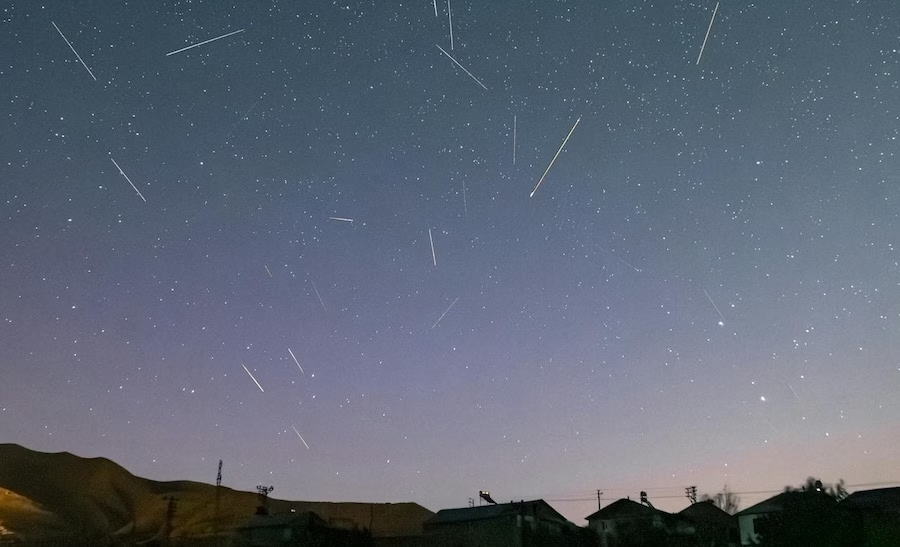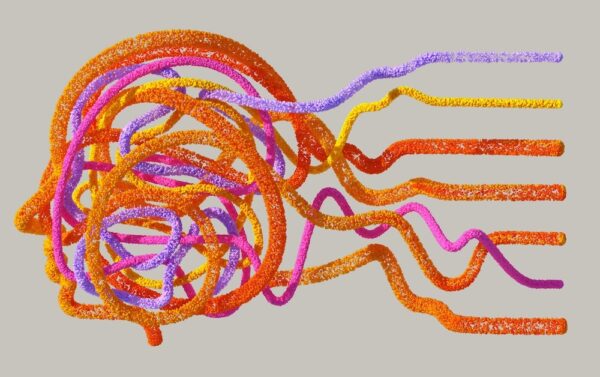The Perseid meteor shower returns this summer to Long Island skies from July 17 through August 23, with its peak forecast during the nights of August 12–13. Known for its colorful streaks and vivid fireballs, the Perseids originate from debris shed by comet 109P/Swift-Tuttle, which leaves behind a trail of particles that burn in Earth’s atmosphere at nearly 37 miles per second.
Bright Trails, Big Moon: What to Expect in 2025
Under dark skies, the Perseids can deliver as many as 100 meteors per hour. But in 2025, a waning gibbous moon—nearly 85 percent full—will rise before midnight, brightening the sky and likely reducing visibility. Skywatchers may see about 20 to 30 percent of that usual rate, though larger, slower fireballs may still break through the lunar glow. Even with moonlight interference, that could mean roughly 50 meteors per hour at best, fewer in areas with light pollution.
When and Where to Watch The Perseid on Long Island
The best time to watch is after midnight and before dawn, ideally between 12 a.m. and 4 a.m., when the radiant near the constellation Perseus climbs higher in the northeastern sky. But you don’t need to stare directly at Perseus—some of the longest, most dramatic meteors appear far from the radiant. Instead, lie back and scan as much of the sky as possible.
Choose a dark-sky location far from streetlights and buildings. Spots like Caumsett State Park, Wildwood State Park, the dunes of Robert Moses, or even sections of Fire Island offer prime conditions. Bring a blanket, lawn chair, and snacks. Allow your eyes at least 20 minutes to adjust to the dark—and avoid checking your phone, which can ruin night vision.
Our complete list of meteor showers seen from Long Island: Click here.
Why the Perseids Are Still Worth It
Even in a moonlit year, the Perseids remain a favorite among stargazers for their reliability and beauty. The meteors often leave behind glowing trails that linger, and many are bright enough to be seen even under less-than-perfect conditions. Their peak comes at the perfect time—warm August nights mean you can stay outside longer without freezing, and with schools still out, it’s a great family-friendly event.
The Perseids also have some celestial legacy: they’ve been documented since at least 36 AD and are sometimes referred to as the “Tears of St. Lawrence,” aligning with the saint’s feast day on August 10. For generations, they’ve inspired awe, wishes, and just maybe, a moment to stop and look up.
Final Tips for Long Island Stargazers
If you’re hoping to catch the show at its best this year, try heading out a few nights before the peak—when the moon sets earlier and skies are darker. Look toward the northeast, but keep your eyes moving. The meteors can appear anywhere. No telescope needed—just your own eyes and a willingness to stay up late.
So grab your blanket, pack some bug spray, and settle in. The Perseids may not be at their full power this year, but even a few streaks of cosmic fire can make for a memorable night under Long Island’s summer sky.
For a complete list of meteor showers seen from Long Island click here.




